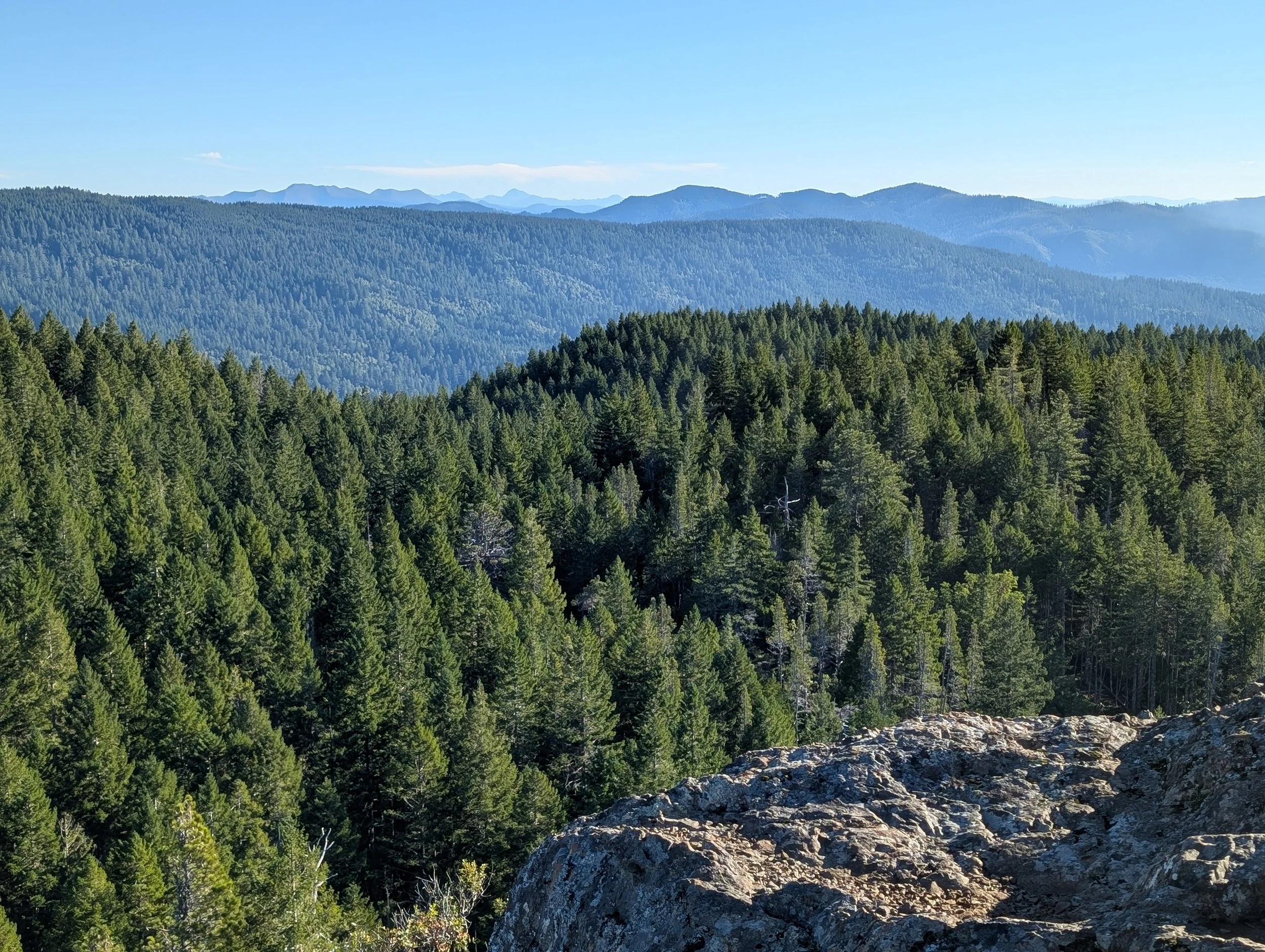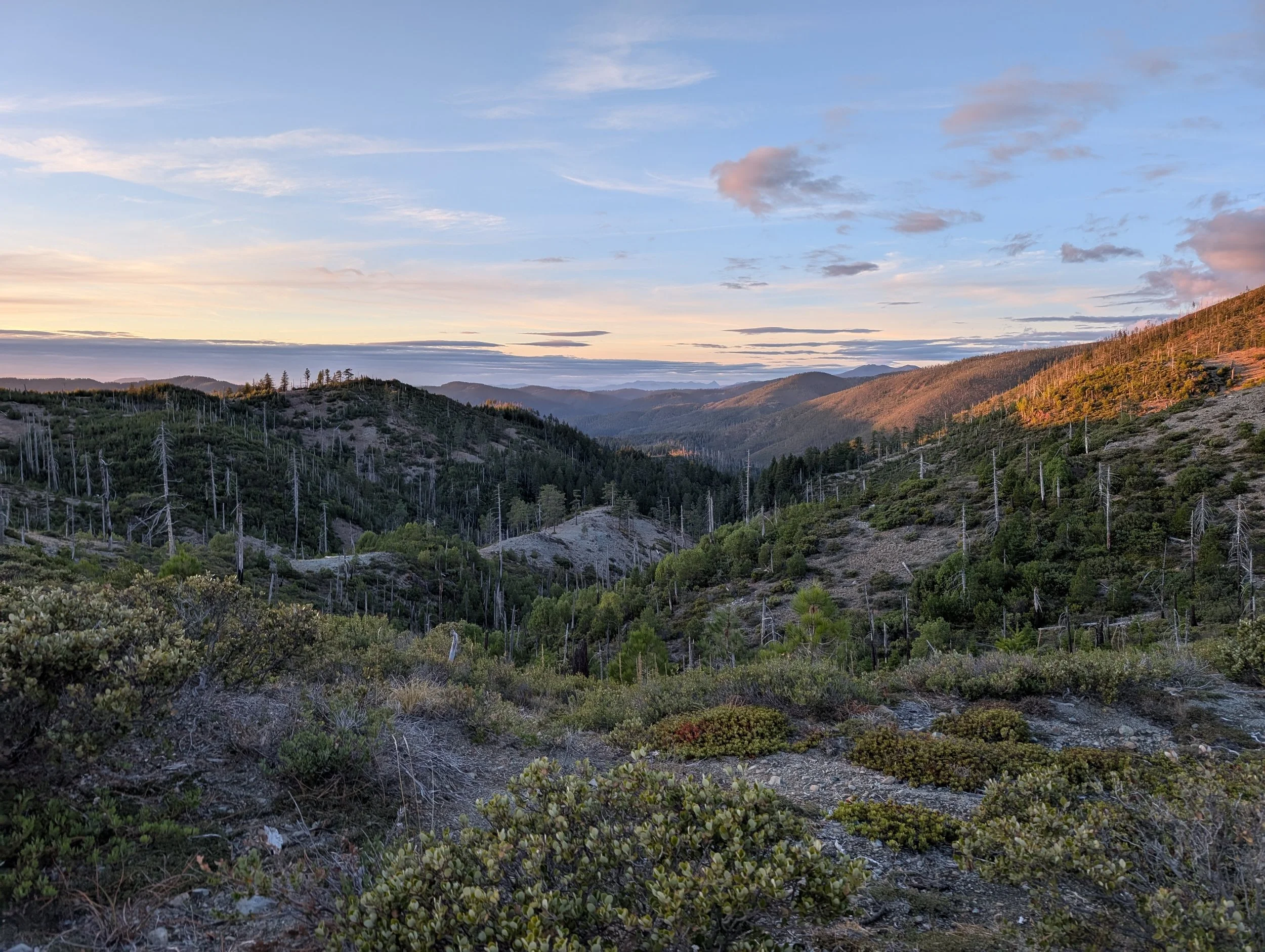Threats to the Wild Nature of the Klamath-Siskiyou
The Klamath-Siskiyou: home to stunning ancient forests, irreplaceable wildlife and botanical diversity, and wonderful wild rivers. Unfortunately, private industries threaten to destroy our public forests, trash our rivers, and harm sensitive wildlife. Too often, our public lands are threatened by those seeking to make a quick buck off of our natural heritage. That’s where you and KS Wild come in. Together we work to protect the our rivers and forests and help local communities benefit from sustainable management of our public resources.
The National Forests in the Klamath-Siskiyou are a treasure. When KS Wild formed in the mid-1990s the Forest Service called itself a “multiple-use” agency but that primarily meant that they focused on many different types of logging our national forests. The adoption of the Northwest Forest Plan in 1994 curbed the worst old-growth logging tendencies of the Forest Service. To their credit, many local Forest Service planners now focus on repairing the damage to watersheds and ecosystems rather than slicking-off forests.
Specific Threats
Throughout most of the West, the BLM manages cattle, oil and gas leases, and mining in the “basin and range.” In western Oregon, the BLM came to manage a large swath of deep forest in the early 1900s after railroad speculators defaulted on federal land grants. Many of these public forests neighbor private industry clearcuts, others are next door to rural residential areas. Anyone who has ever flown over southern Oregon and witnessed the vast array of clearcuts and logging roads is aware of the massive impact of industrial forestry.
Bureau of Land Management - Pressure to Log
By far, the public land management agency in the region with the most pressure to harm our public forests is the Bureau of Land Management. For decades, the BLM primarily managed these forests by building roads and leveling old-growth forests to make way for plantation forestry. Fortunately, since the 1990s, the BLM has slowed down this old-growth logging program and has begun better protecting streams and wildlife habitat. Industrial private timber owners have continued their rate of logging, with nearly all of the remaining native forests now found on our public lands, including what remains on BLM.
Today, some reasonable BLM planners have tried to move the agency towards sustainable thinning of second-growth tree plantations and fire suppressed forests. They often are pressured by well-connected timber executives and their political allies to increase logging of older forests. KS Wild supports producing jobs and timber by-products without destroying watersheds. Unfortunately, the BLM is highly susceptible to political pressure to increase destructive logging, including: clearcutting, logging near sensitive streams, and cutting down what remains of our old-growth forests over 150 years of age.
Forest service - Salvage logging
A primary threat to wild places managed by the U.S. Forest Service is the insistence upon clearcut “salvage” logging fragile areas following natural fire events. The forests of the Klamath-Siskiyou evolved with fire. Wildfires, while potentially harmful to human communities and property, are a part of the forests in this region. Post fire forests are often extremely rich and complex, and they are very susceptible to long term damage from industrial logging operations. Yet, too often massive clearcut timber sales are proposed that harm recovering fish, wildlife, and forests. Salvage logging is a continuing and serious threat to the remaining wild places and public lands of the KS.
Off-Road Vehicle Destruction
More and more wildflower meadows in the KS have been turned into mud pits by irresponsible (too often young and drunk) ORV enthusiasts who make it harder on those who want to ride responsibly.
Have you ever noticed that extreme off-road vehicle (ORV) commercials nearly always show the truck or quad tearing through a meadow, kicking up mud, and then smashing through a creek? Occasionally followed a short disclaimer to “tread lightly.” Talk about a mixed message. Certainly there are responsible ORV users (KS Wild staff have owned a ORVs ourselves!), but a few folks with ORVs in the wrong place can leave lasting damage.
Extreme ORV use even occurs in and through salmon spawning streams by a few bad apples who never learned to appreciate and protect our shared heritage of fish and wildlife.
KS Wild works to protect and defend special places and sensitive watersheds from irreparable ORV damage.
Grazing
There’s nothing more discouraging to the backcountry hiker than finally reaching a mountain spring, expecting refreshing clear, cold water, only to find the watering hole full of cow pies. Cows often congregate in the most hydrologically and botanically fragile places on our public lands, degrading water quality at the source and trashing remote sensitive meadow habitat. The grazing of public meadows and botanical areas by private cattle interests and the destruction of salmon-bearing streams continues on our public forests.
While some federal land managers work to reduce the impacts of grazing on special places, the Klamath National Forest and the Medford BLM are known for authorizing grazing practices that harm recreation, water quality, and at-risk wildflowers. KS Wild works with volunteers to protect threatened plants from unregulated grazing and to protect fragile wetlands, fens, and streamsides from being destroyed by cattle. We work with rangers and ranchers to reduce the impacts of cattle on sensitive habitats in our region.
Mining
Examples of destructive “rip and run” mining practices are all around us. From the toxic spew of the Almeda Mine into the Rogue River, to the Superfund site at the Blue Ledge Mine that soaked up millions of taxpayer dollars. Recently, a mile and a half long sediment plume was released into a Rogue River tributary from an illegal mine. There is no shortage of mining horror stories dating back to the killing of Native Americans by the first miners in the region. Too often, miners grab the gold and the public ends up with toxic pollution and a big cleanup bill.
A settling pond from the Stray Dog Mine along the Rogue River is pictured here.
KS Wild is committed to defending our wild rivers, salmon, and public health from destructive mining. There are responsible small-scale miners in the region that try and do the right thing, and clean up after their impacts. Other mines, such as large scale nickel strip-mines proposed in our region would have such devastating impacts that they are simply just a bad idea. Often, these mines would benefit foreign multi-national mining conglomerates would be bad news for all those who love wild rivers, live downstream and get drinking water from these rivers, and are concerned about the health of their community.













